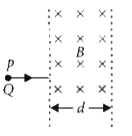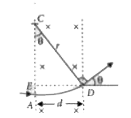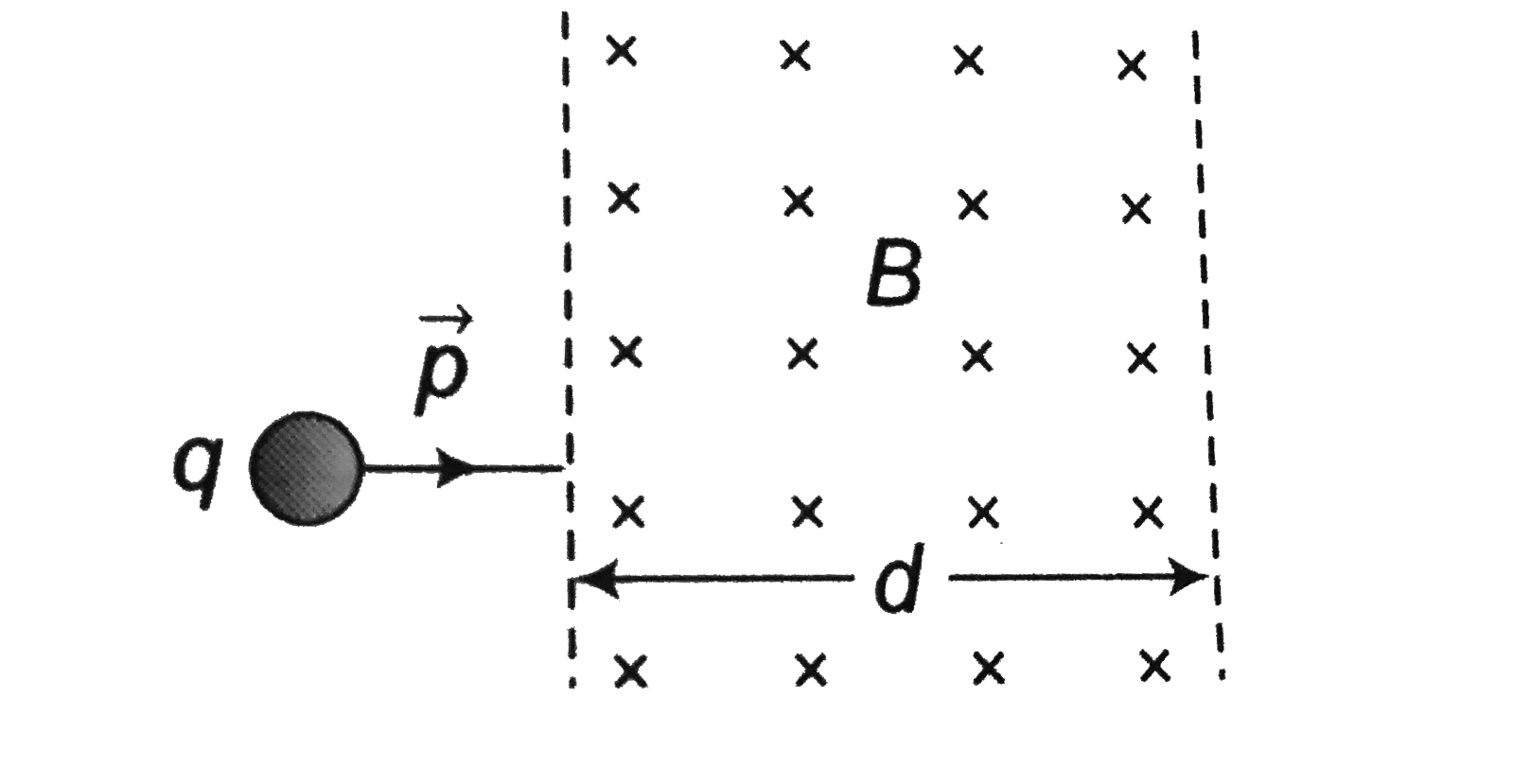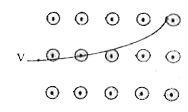A particle with charge Q, moving with a momentum p, enters a uniform magnetic field normally. The magnetic field has magnitude B and is confined to a region of width d, where d<PBQ. The particle is deflected by an angle θ in crossing the field. Then

sin θ=BQdp
sinθ=pBQd
sinθ=BpQd
sinθ=pdBQ
The correct Answer is:A
A to D is part of circle with centre C and radius CD=r
mv=p=BQr
r=pBQ
sin θ=EDCD=dr=BQdp

Topper's Solved these Questions
- MODEL TEST PAPER 1 Book:MTG-WBJEEChapter:MODEL TEST PAPER 1 Exercise:PHYSICS (Category) 3 : Single Option correct type (2 mark)
Explore 5 Videos
- MOTION OF CENTRE OF MASS, CONNECTED SYSTEMS, FRICTIONBook:MTG-WBJEEChapter:MOTION OF CENTRE OF MASS, CONNECTED SYSTEMS, FRICTIONExercise:WB-JEE Previous years questions
Explore 17 Videos
Similar Questions
A particle with charge q, moving with a momentum p, enters a uniform magnetic field normally. The magnetic field has magnitude B and is confined to a region of width d, where d<pBq , The particle is deflected by an angle q in crossing the field. Then

View SolutionA particle with charge q, moving with a momentum p, enters a uniform magnetic field normally. The magnetic field has magnitude B and is confined to a region of width d, where d<pBq. If the particle is deflected by an angle θ in crosing the field then

View Solution
Knowledge Check
A particle with charge q, moving with a momentum p, enters a uniform magnetic field normally. The magnetic field has magnitude B and is confined to a region of width d, where d<pBq. If the particle is deflected by an angle θ in crossing the field then
 Asinθ=BqdpBsinθ=pBqdCsinθ=BpqdDsinθ=pdBq
Asinθ=BqdpBsinθ=pBqdCsinθ=BpqdDsinθ=pdBqA charged particle enters a uniform magnetic field perpendicular to it. The magnetic field
Aincreases the K.E. of the particleBdecreases the K.E. of the particleCchanges the direction of motion of the particleDdoes both (a) and ( c)If a charged particle enters perpendicular in the uniform magnetic field then
AEnergy remains constant but moment changesBEnergy and momentum both remains constantCMomentum remains constant but energy changesDNeither energy nor momentum remains constant
A charged particle enters a uniform magnetic field perpendicular to it. The magnetic field
View SolutionA charged particle having charge q is moving in a uniform magnetic field B parallel to the lines of field force, the magnetic force acting on a charge will be qvB
View SolutionA charged particle having charge q is moving in a uniform magnetic field B parallel to the lines of field force, the magnetic force acting on a charge will be qvB
View SolutionIf a charged particle enters perpendicular in the uniform magnetic field then
View SolutionA particle enters the region of a uniform magnetic field as shown in figure. The path of the particle inside the field is shown by dark line. The particle is :

View Solution
